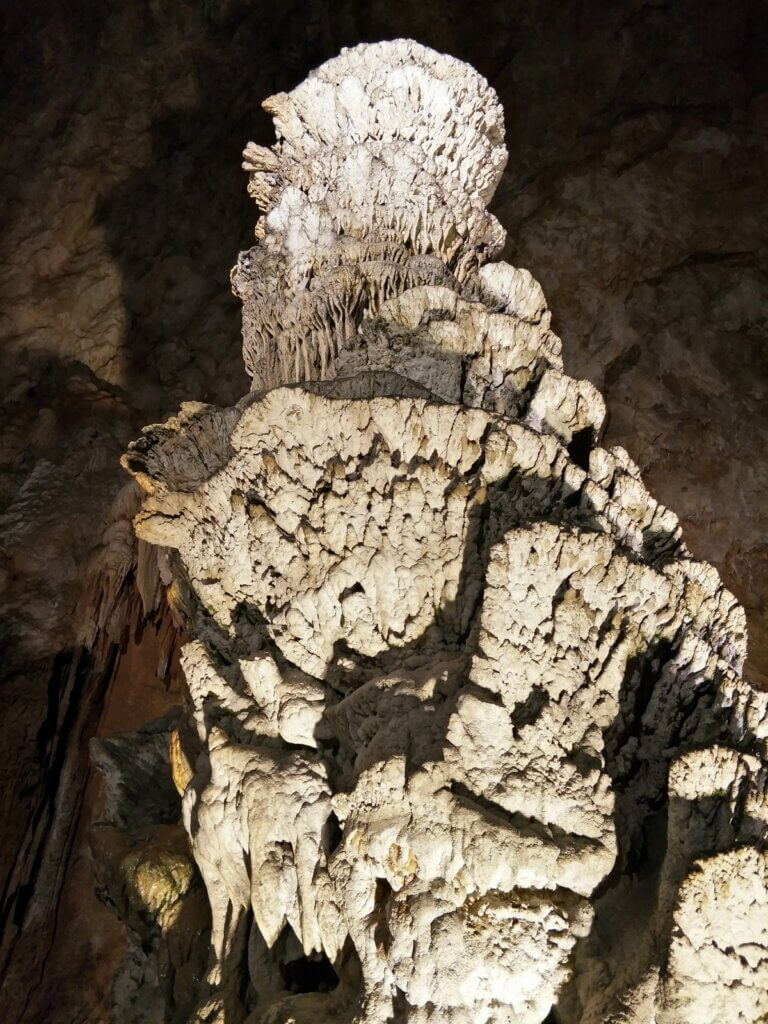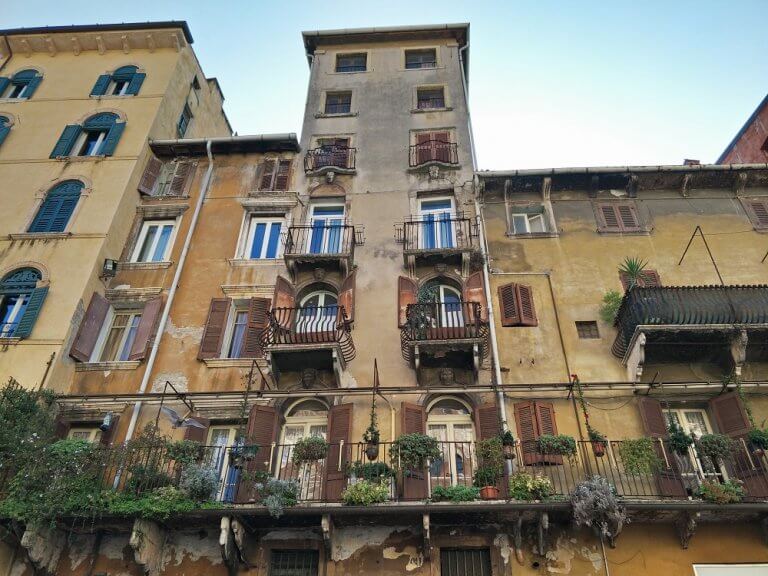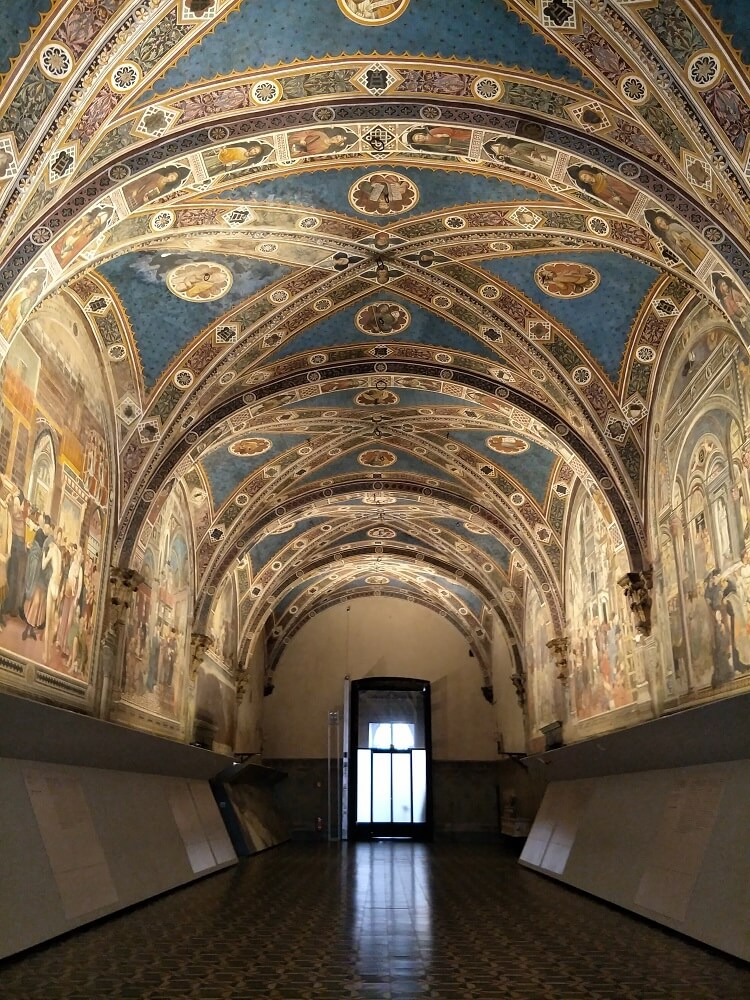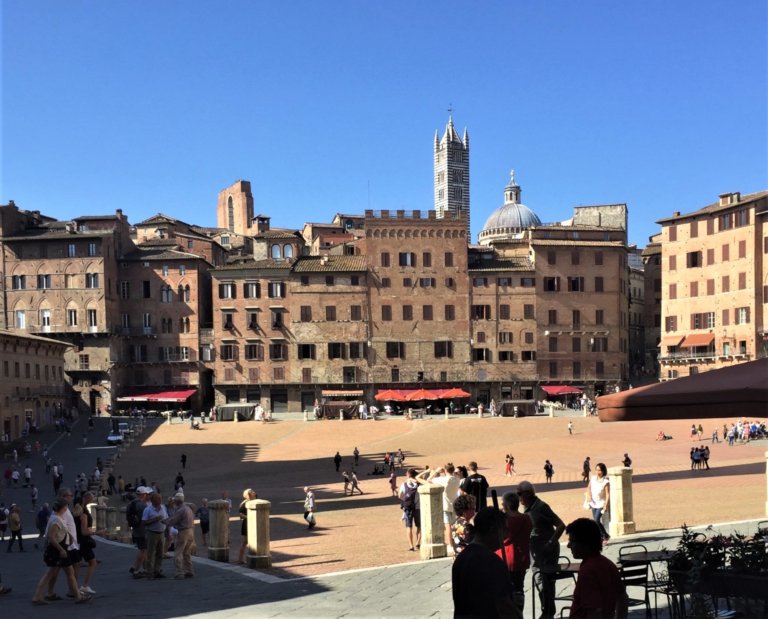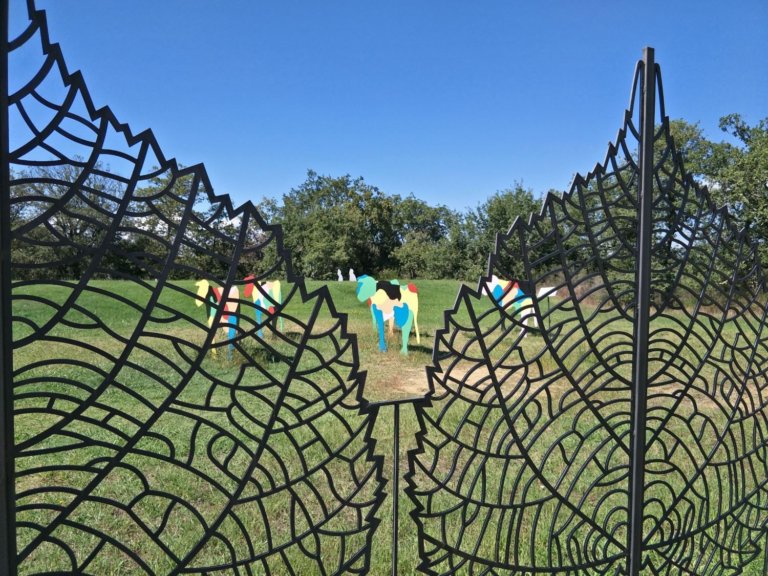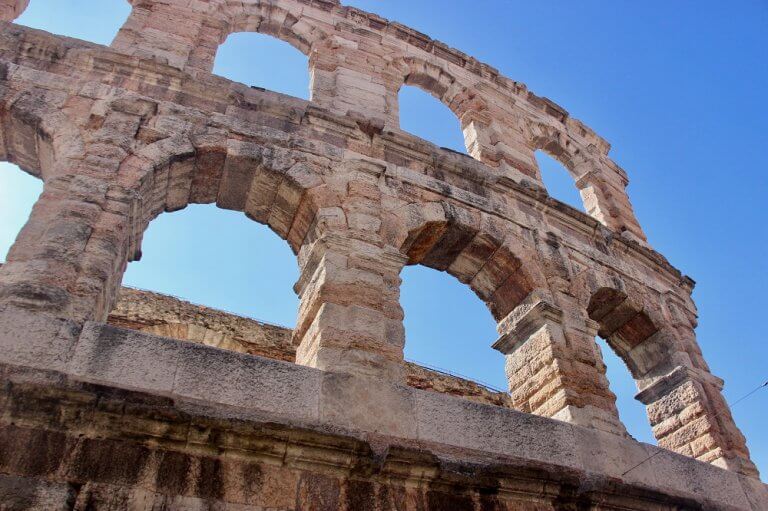Trieste – A city that surprised and delighted us so much we extended our stay. A city not heralded in many must-visit lists. A city we had heard little about.
 Palazzo Gopcevich now the Carlo Schmidl Civic Theater Museum. Grand Canal Trieste
Palazzo Gopcevich now the Carlo Schmidl Civic Theater Museum. Grand Canal Trieste
After paying dearly for the mistake of hopping on the wrong train – going to the right destination at the right time – we enjoyed the scenic coastal ride from Venice to Trieste. Our first view arriving out of the rail station was the city encircling the harbour, as it stretched up the steep hillsides around us. “It pays to check topography when booking accommodation,” I thought. Booking close to the city centre is one thing, knowing it is straight-up a hillside is another.
Arriving late in the afternoon we heeded the advice of our host and took a taxi from the rail station to the road junction from where we would be met and taken to our accommodation. The ride was up, up and up a steep hill – thankful not to be lumping packs up the hill, appreciating the ever-expanding view as we ascended.
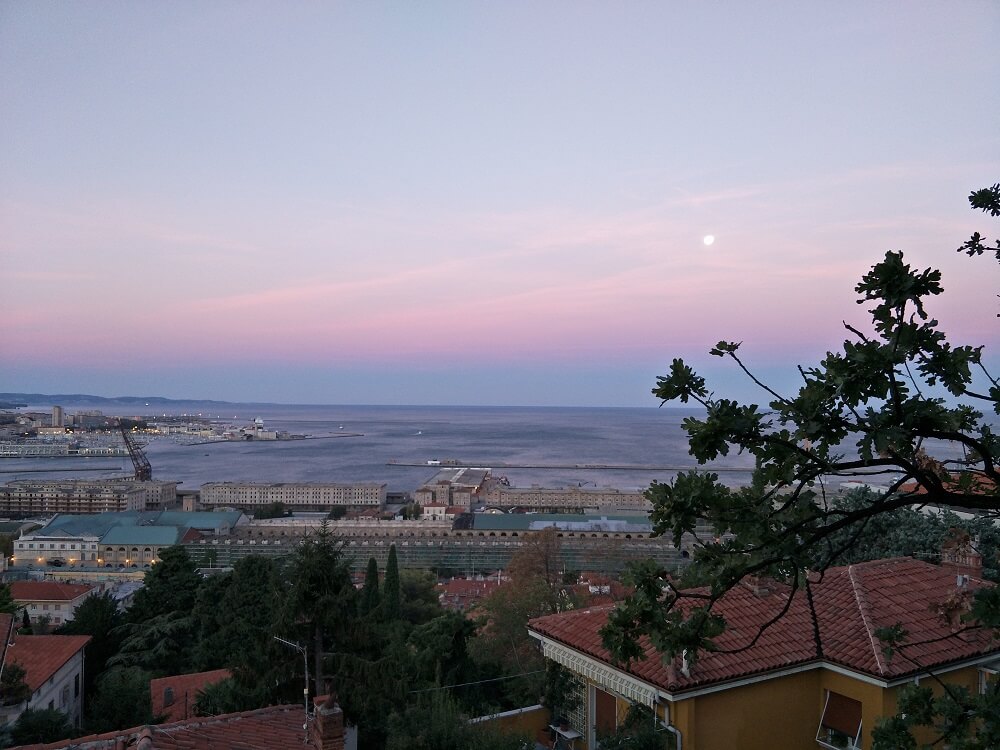
Our host met us at the assigned junction, and it was up, up, and up again – this time on foot. It was worth every breathless step on that first day, and every other day we stayed. Not only the view as we arrived but the sunset that first and every other night. The house on two levels had everything we could possibly want and more. An array of treats and breakfast options spilled over the bench a feast of options from chocolate to cereals.
Our research on Trieste suggested a visit to the Tourist Information Office (Yes, of course, we would anyway!) – from here we could get the Trieste audio walking tour put together by the local office. And so the first morning began ….
With a search for breakfast – we found a small waterfront café that provided the locals with early morning pick-me-ups and us with a breakfast croissant and coffee amidst old posters, memorabilia and a stream of local characters picking up breakfast.
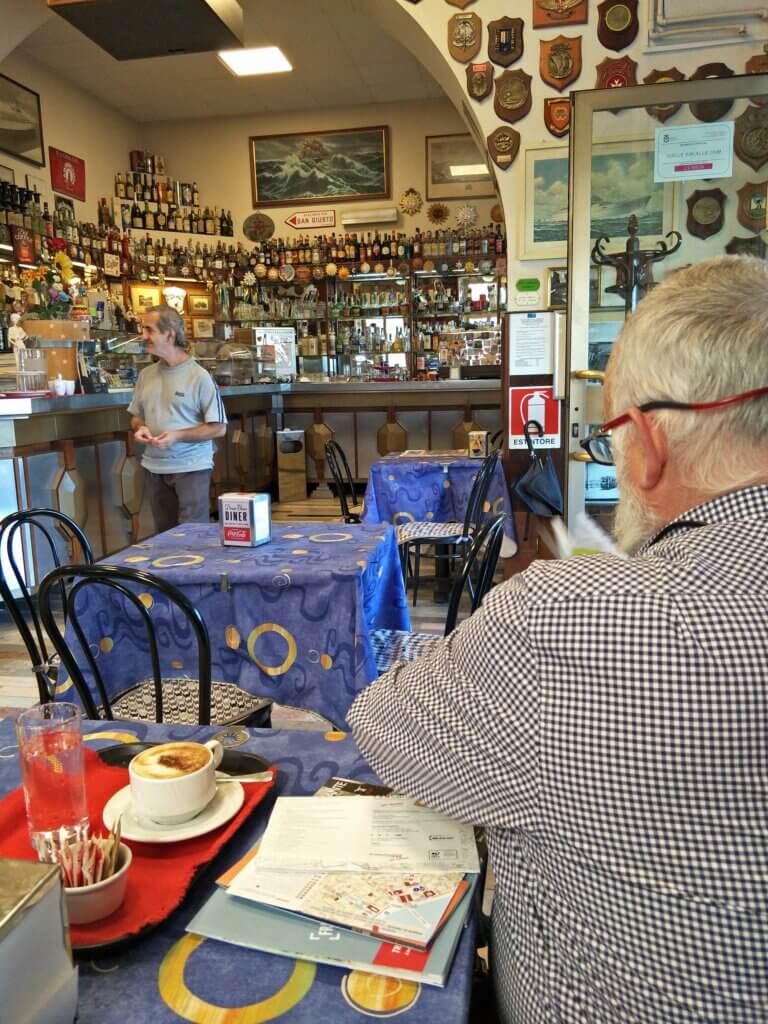
After breakfast a visit to the Trieste Tourist office where the Self-guided Audio Walking tour was kindly extended from 4hours to overnight as there were few tourists in the city.
What a great way to investigate a new city. We could roam at our leisure – stopping for coffee, snacks, Aperol Spritz, – anytime we wanted. The audio information was filled with historical and anecdotal information about this city with its history of takeovers, dynasties and desires for self-determination.
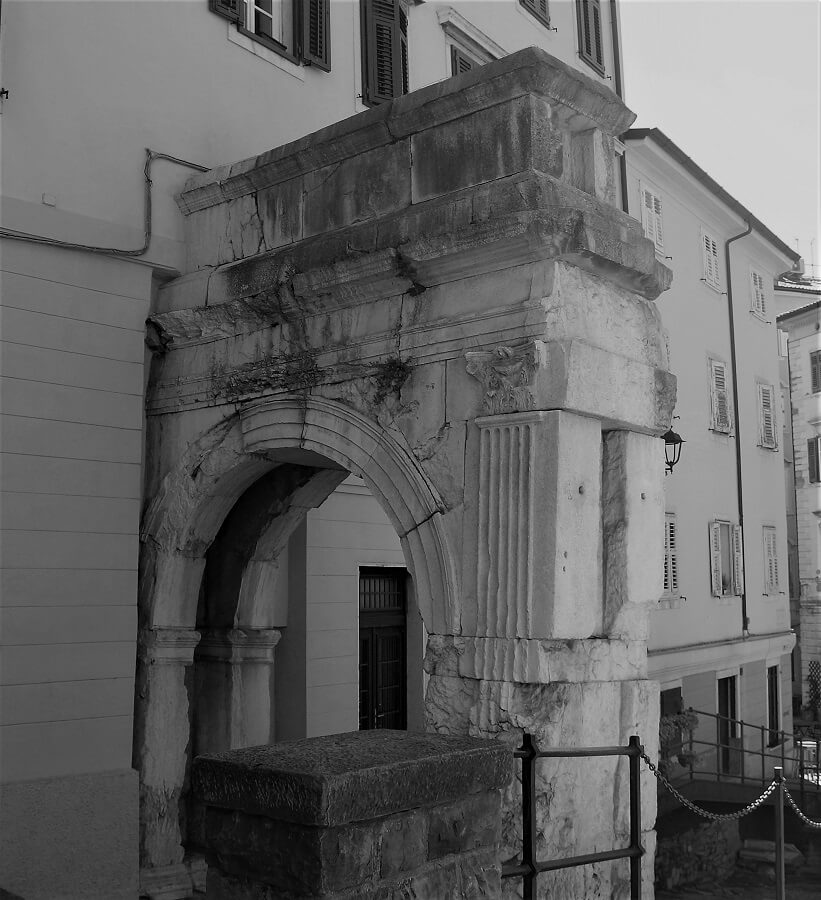
A long history of being part of someone else’s country sees a wide cultural influence in most aspects of the life of Trieste. A city, where many cultures met: Latin, German, Austro- Hungarian, Greek, Russian, Jewish. A place where Europe meets the Mediterranean sea. Throughout the city, multiple architectures, remnants of religions and rulers remind of the many epochs Trieste has seen – ancient Roman ruins, the brutalist architecture of the communist era, the ornate and decorative design of the Austro-Hungarian period.
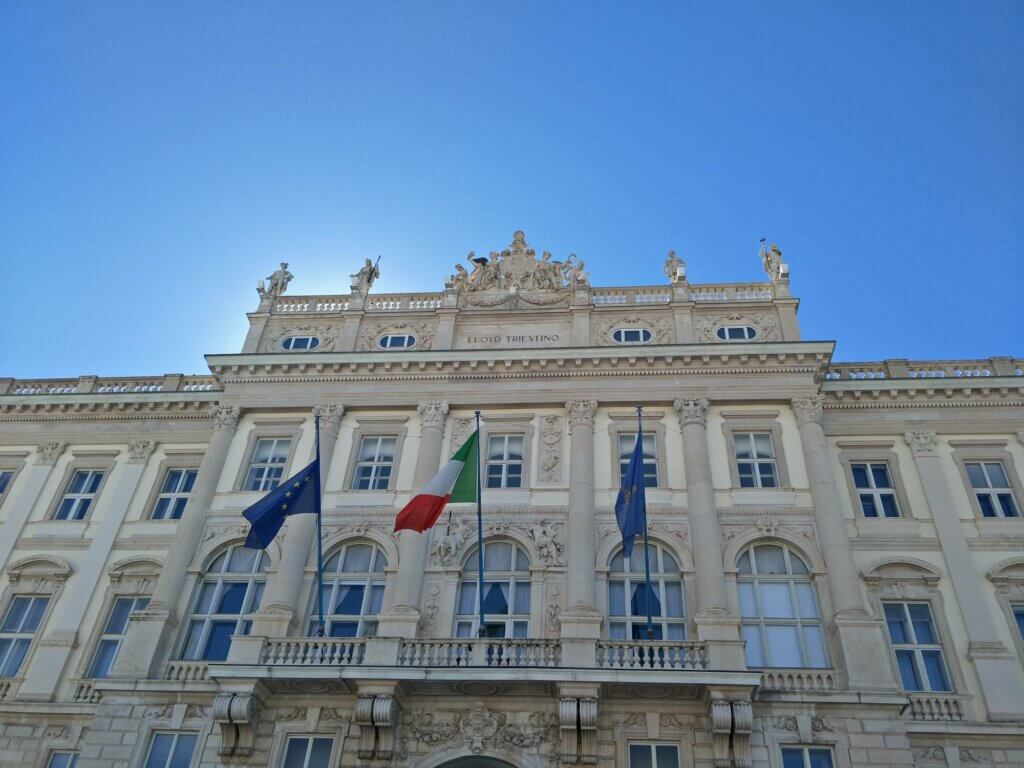
A lengthy period of being a port city within the Austro-Hungarian empire has left a strong architectural mark, lending a gracious air to the city square surrounded by buildings whose gilt and decoration adds glamour and awe to the harbour city.
Along with architecture, the food reflects the empires who have occupied or visited the harbour city. An eclectic mix of cuisines – a combination influenced by the sea and its bounty, and the many cultures passing through – the Hapsburg Austro Hungarian, Slavic and Balkan, and more recently Italian. A place where seafood and goulash are possible. Where Italian pasta sits alongside Viennese coffee.

Trieste Treasures we found included:
Roman Ruins
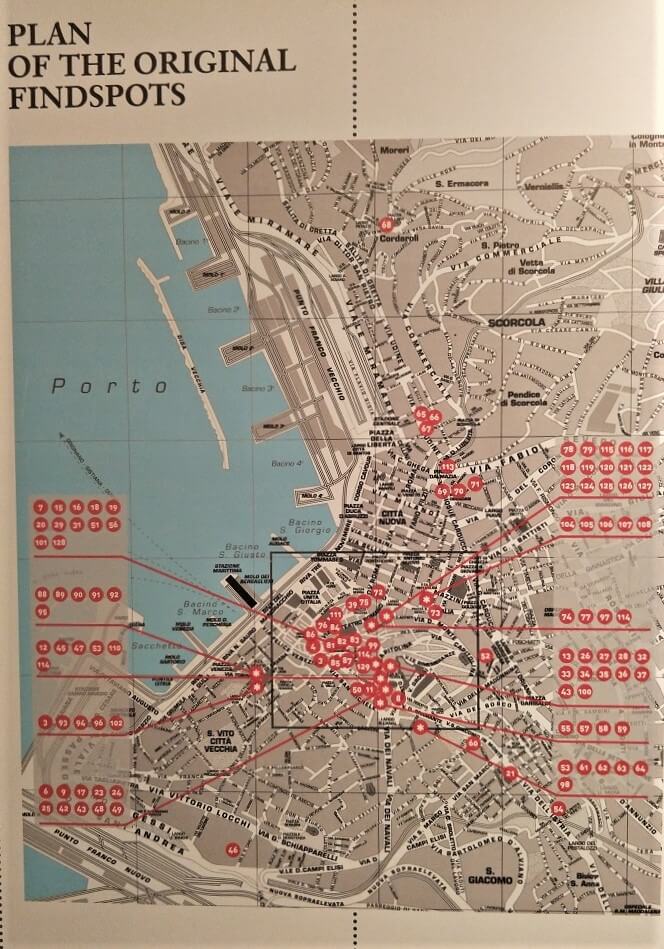
Early Roman excavations are heavily congregated throughout the city, often in the centre of modern life. Churches from many religions and eras are also found throughout the city.
Close to the centre of the city is the oldest church in Trieste – the Romanesque Basilica of San Silvestro and with barely a passageway between – the Sanctuary of Santa Maria Maggiore. The latter a “young” 15th century church first built in the 1600s by the Jesuits and playing a key role in the Black Plague.
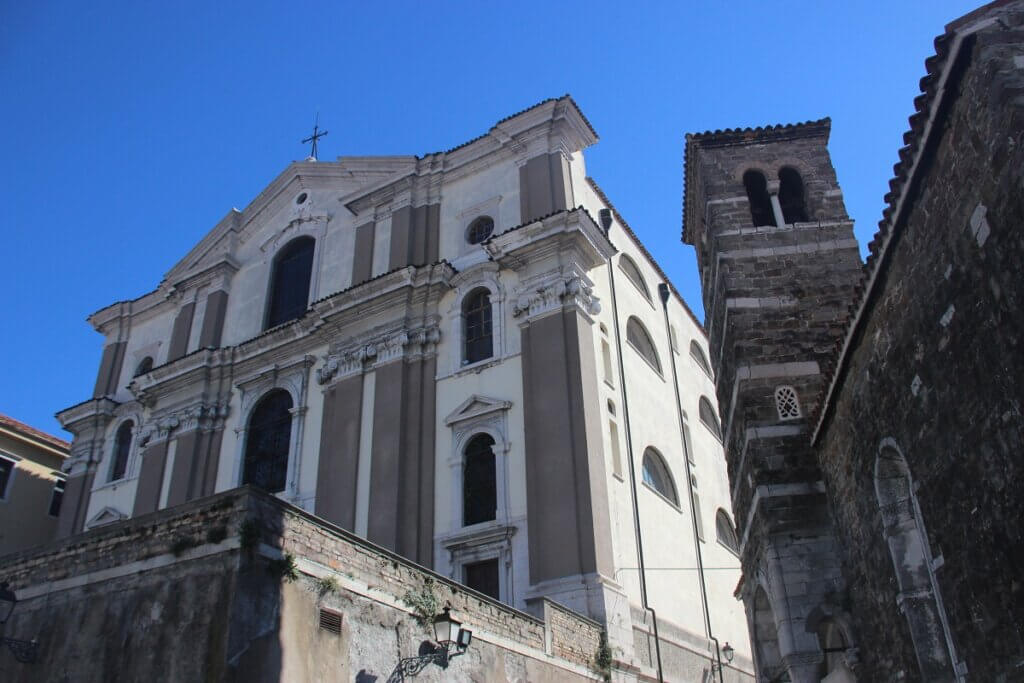
Revotella Museum
A treasure of a museum housed in the palace of the exotically named Baron Pasquale Revoltella. The Baron bequeathed his palace, his art collection and finances to help maintain it. Providing us – 150 plus years later – with a wonderful collection of art and the extravagant palace. The visit came with an extensive audiovisual app guiding you through the art and furnished rooms of the palace. An extension of gallery space blends the modern with ornate original contrasting the more minimalist with the extravagant rooms of the palace – the white and gold dining room with studded with chandeliers and gold furnishings.
The art included finely sculpted figures, richly textured paintings and art representing

A small exhibit – a fascinating piece of furniture the captured my attention was the perfectly carved overbed table. Usually now a feature in hospitals – not as exquisitely presented but providing a similar function.
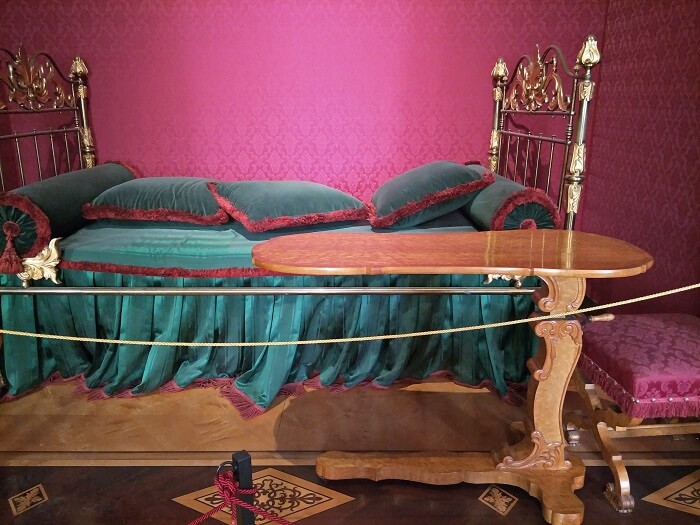
Carlo Schmidl Civic Theatre Museum
While talking about museums a deal was struck between us I visit the Maritime museum and he visits the Theatre Museum. Another museum developed from the generosity and foresight of a benefactor. Carlo Schmidl.
The building itself is visit-worthy – the facade a colourful mix of styles lining the Grand Canal, the interior with delicate parquetry floors, an intricate staircase and large rooms now housing displays of instruments and theatre memorabilia. The exterior is seen in the photograph at the start of this post.
The exhibits were of musical instruments and theatrical memorabilia collected by Carlo Schmidl and expanded over following years. Beautiful instruments
In a small hall we discovered an exhibition of the Barcolana. A photographic exhibition leading to a “When can we go?”. A busy international regatta of boats of all shapes and sizes from around the world crowding into the picturesque Trieste harbour.
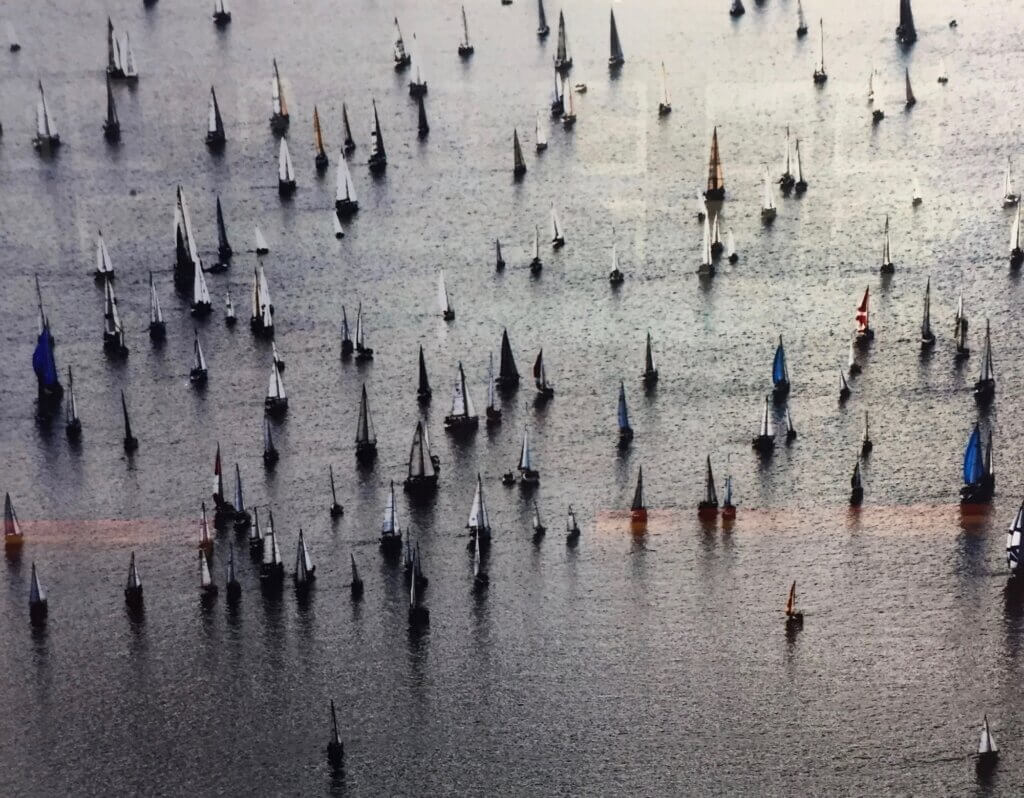
Maritime museum
A small quaint museum housed in an old warehouse with an appropriately down at heel exterior and an equally appropriately musty interior with exhibitions of the fishing, ship and maritime history of the region. Ship models and dioramas of the ocean and fishing industry predominate.
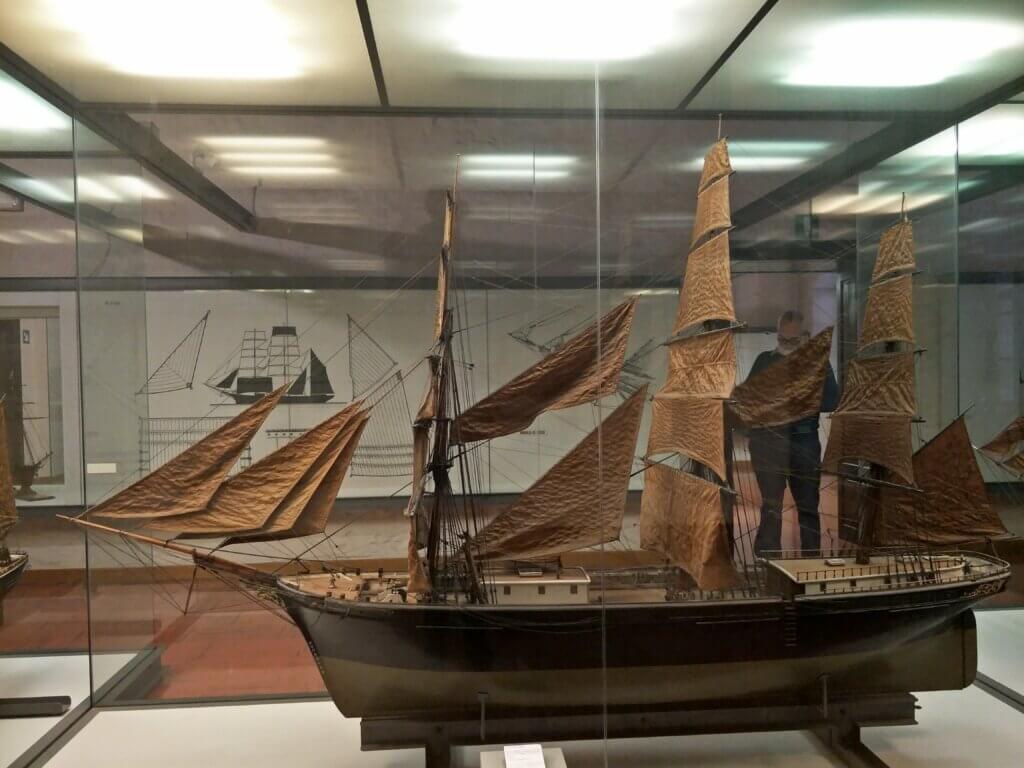
Mirimar Castle
A beautiful white castle on the outskirts of Trieste. A coastal ride on public transport adding to the thrill of the castle visit. This was built by Archduke Ferdinand Maximilian of Habsburg who was the brother of Emperor Franz Joseph.
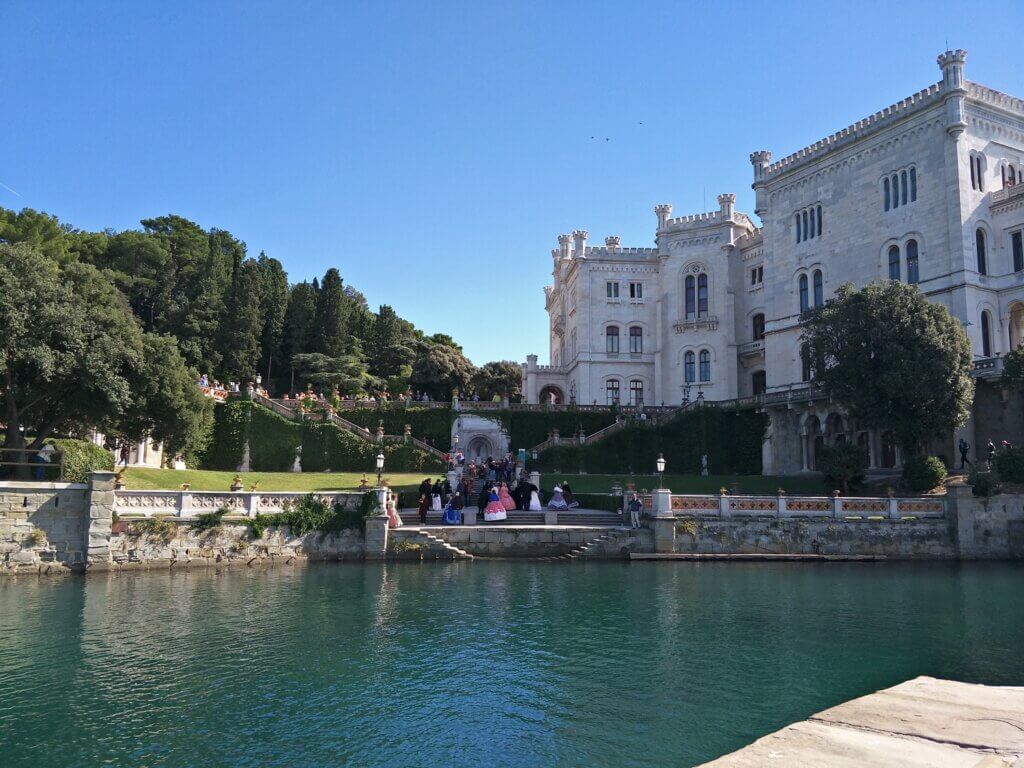
The castle is built at the sea’s edge with a huge park-like garden behind. Authenticity was enhanced by the film crew and cast in period costume throughout the castle building and grounds while we were there.
Grotto Gigante Caves
We debated visiting the caves – too many limestone caves too many places!!! It would have been a miss not to. These caves are just on the Trieste side of the border with Slovenia. The caves are part of the Trieste Karst system. The largest cave measures 107 m (351 ft) high, 65 m (213 ft) wide and 130 m (430 ft) long. Both the cavities and the limestone forms are huge.
